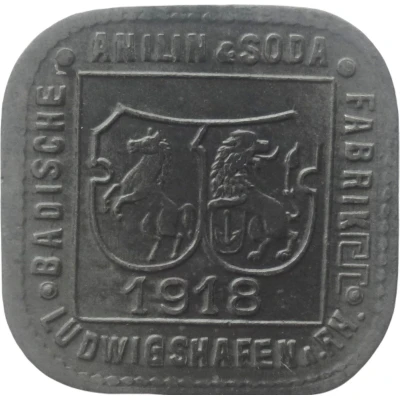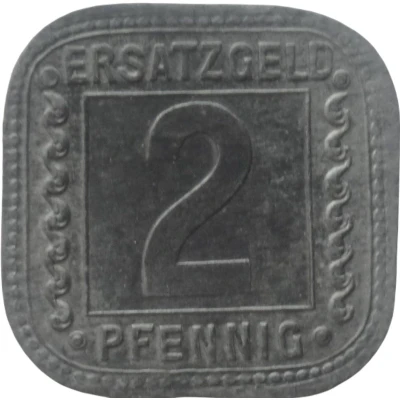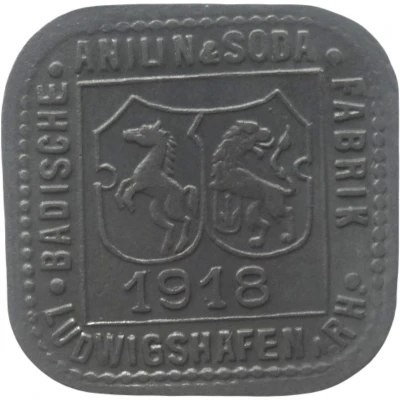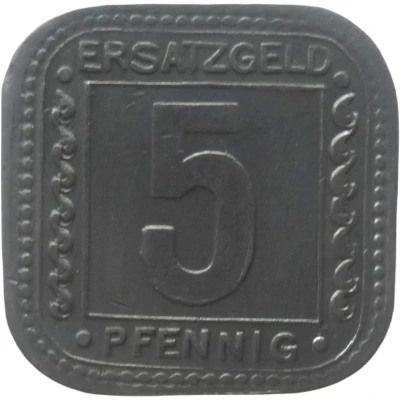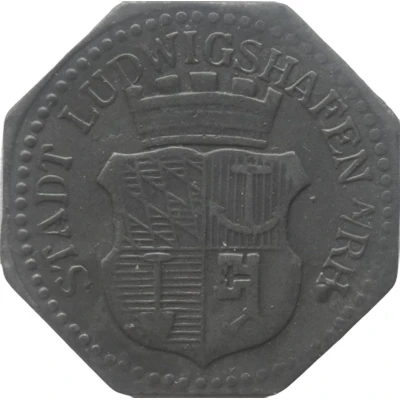
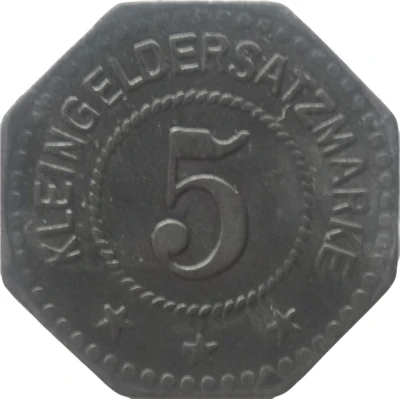

© Willem63 (CC BY-NC-SA)
5 Pfennigs - Ludwigshafen am Rhein ND
1917 year| Zinc | 1.6 g | 20.7 mm |
| Issuer | City of Ludwigshafen am Rhein (Federal state of Bavaria) |
|---|---|
| Emperor | William II (Wilhelm II) (1888-1918) |
| Type | Standard circulation coin |
| Year | 1917 |
| Value | 5 Pfennigs (5 Pfennige) (0.05) |
| Currency | Mark (1914-1924) |
| Composition | Zinc |
| Weight | 1.6 g |
| Diameter | 20.7 mm |
| Thickness | 1 mm |
| Shape | Octagonal (8-sided) |
| Technique | Milled |
| Orientation | Medal alignment ↑↑ |
| Demonetized | Yes |
| Updated | 2024-10-04 |
| Numista | N#79314 |
|---|---|
| Rarity index | 64% |
Reverse
Pearl rim with legend circled rope circle with denomination centered
Script: Latin
Lettering:
KLEINGELDERSATZMARKE
5
★ ★ ★
Edge
Plain
Comment
Issuing body: [Stadt, Pfalz].Interesting fact
The 5 Pfennigs coin from Ludwigshafen am Rhein (Federal state of Bavaria) made of Zinc weighing 1.6 g has an interesting fact that it was minted during a time of economic and political turmoil in Germany. The coin was minted in 1917, during World War I, when the country was facing severe economic challenges, including inflation and food shortages. Despite these challenges, the coin was still made of zinc, which was a relatively inexpensive material, indicating that the government was trying to conserve resources for the war effort. This coin is a small but interesting piece of history that reflects the economic and political climate of Germany during that time.
